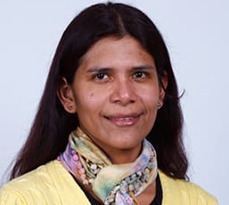How can regulators better support the trend toward intermittent renewable energy connected to lower voltage distribution networks in order to prevent network overload? Regulatory changes so far vary widely, finds a new paper from Cambridge Judge Business School.

There is a clear trend toward intermittent renewable electricity within the electricity system, and much of this new generation is connected to lower voltage electricity distribution networks rather than to the high voltage transmission system.
So how can regulators better support the development of this evolving distribution situation – including more competition, flexibility and optimal resource use – to help ensure that capacity constraints are not overloaded given emerging demand from electric car charging and heat pumps?
That’s the topic of a paper co-authored by Dr Karim Anaya, Senior Research Associate in Energy Economics at Cambridge Judge Business School, and Michael Pollitt, Professor of Business Economics at Cambridge Judge, who are members of the Energy Policy Research Group at the School.
The paper, published in the journal Energies and reflecting questionnaires sent to regulators, network companies and industry experts, finds a collective interest in the procurement of flexibility on the part of distribution utilities, but regulatory changes so far differ widely across the seven jurisdictions studied – Australia, France, Germany, the UK, Japan, The Netherlands, and Norway.

Even within countries, there are divergent views among on how flexible markets have fared so far and how they should evolve. In the UK, for example, one respondent said that there are enough market rules already; another suggested that local market designs need to be rolled out through regulation to ensure transparency and better integration with existing markets; another said that rules establishing the responsibilities of market players too early could represent a barrier to further flexibility.
“The paper shows that while many industry insiders believe that greater flexibility is needed in this area, there’s no real consensus on the best way forward in achieving this,” says paper co-author Michael Pollitt. “One clear conclusion is that each jurisdiction needs a social cost-benefit methodology which allows flexibility solutions to be properly evaluated by both industry and the regulator.”
The paper outlines various ways that countries promote flexibility in electricity resources – through tariffs, markets, access rights and other means – reflecting European Union rules requiring energy regulators to provide incentives to distribution system operators (DSOs) to procure flexibility services at a national level.
Based on the questionnaire replies, here are some of the paper’s conclusions:
- Even where flexible markets are highly developed, as in the Netherlands, it’s “unclear as to whether they are cost effective at a sustainable scale and whether current regulation is fit for purpose (i.e., does not penalise the adoption of flexible solutions when it seems the most cost-efficient option)”.
- National regulators are cautious on the practicality of implementing more dynamic network tariffs, even in France where a single large DSO is capable of implementing a dynamic tariff to encourage flexibility with minimal financial impact on non-flexible customers.
- While many jurisdictions are taking steps to standardise flexible products, it’s unclear whether this is the best way to handle customer willingness to pay, which reflects not the flexibility product but its characteristics such as what type of asset is providing it.
- There is little interest among national regulators in peer-to-peer trading as an issue in market flexibility, because there would appear to be so little value in individual trades.
“This paper explores different regulatory changes that may be required to incentivise the use of flexibility by distribution utilities,” the paper concludes. “This flexibility, in the form of specific services that can help for instance to solve network constraints, can be provided by different types of distributed energy resources. The better integration of them, supported by suitable regulation, may encourage distribution utilities to adopt more flexible solutions offered by third parties in order to solve grid issues.”
The paper is entitled “The role of regulators in promoting the procurement of flexibility services within the electricity distribution system: a survey of seven leading countries”.


